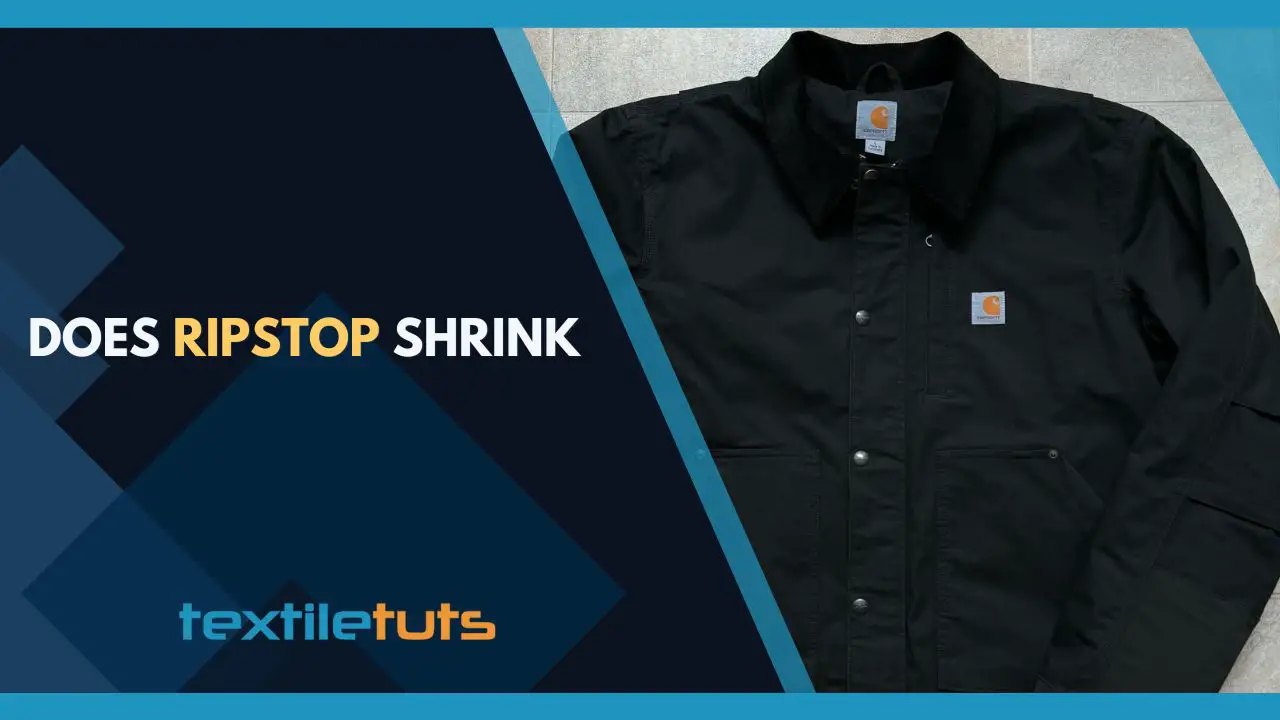Does Ripstop Shrink? Let’s Settle the Debate
Whether you’re an outdoor enthusiast, a fashion aficionado, or someone seeking long-lasting clothing materials, you’ve likely encountered the term ‘ripstop’. A common query among users is about its resistance to shrinking.
Ripstop fabrics are designed to resist tearing and are generally less prone to shrinking, especially when made from synthetic materials like nylon or polyester. However, the fabric can shrink slightly during the washing and drying process depending on the fabric’s cotton-to-polyester ratio.
In this article, I’ll delve into the properties of ripstop, offering you the essential knowledge to maintain the integrity of your gear and garments.
Is Ripstop Nylon Fabric Shrinkable?
Ripstop nylon fabric is a lightweight, durable material well-regarded for its resistance to tearing and ripping, thanks to the reinforced threads woven into the fabric in a crosshatch pattern.
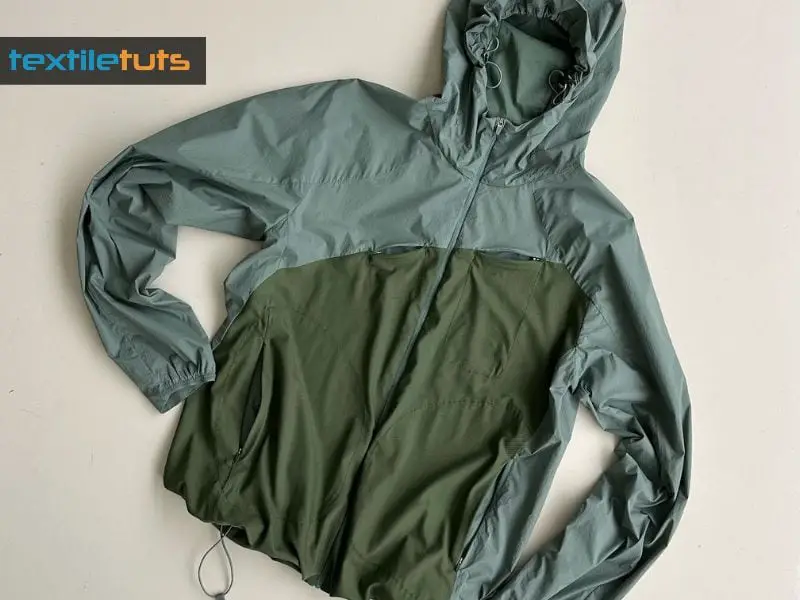
Regarding shrinkage, nylon fabrics, including ripstop variations, are generally considered shrink-resistant compared to natural fibres like cotton or wool.
However, shrink resistance does not mean ripstop nylon is entirely immune to shrinkage. When exposed to high temperatures, either through washing or drying, nylon fabric can experience some shrinkage.
That said, the shrinkage of ripstop nylon fabric is typically minimal, and the fabric is comparatively more stable in size than many other fabrics.
Factors that Influence Ripstop Nylon Shrinkage
like most synthetic materials, ripstop nylon can be prone to shrinkage under certain conditions. Understanding the factors that influence this shrinkage is vital for manufacturers and consumers to ensure the longevity and proper function of the products made from this fabric.
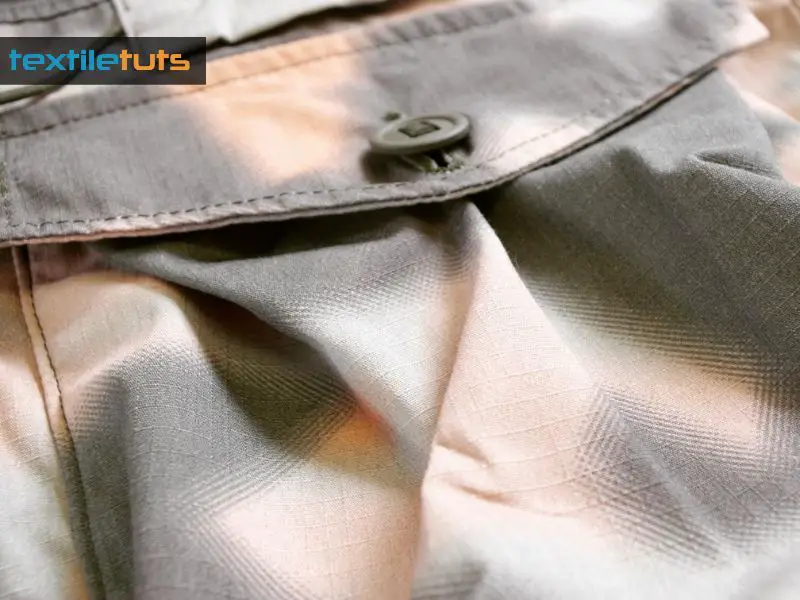
Heat Exposure
Ripstop nylon can shrink when exposed to high temperatures, particularly during washing and drying. Washing ripstop nylon in hot water or drying it at high temperatures in a dryer can lead to significant shrinkage.
Applying direct heat from an iron may also cause ripstop nylon to shrink. If ironing is necessary, it should be done with a protective pressing cloth and the iron set to the lowest effective heat setting.
Pre-shrinkage Treatments
Ripstop nylon may undergo heat setting or other treatments to stabilize the fabric and reduce subsequent shrinkage during manufacturing. However, if these treatments are inadequate or skipped, the fabric could be more susceptible to shrinkage when it goes through heat cycles during regular use or cleaning.
Tautness of Weave
The density and tension of the weave can also affect shrinkage. Tighter weaves might offer more resistance to shrinkage, but they could still contract if the yarns are affected by heat or tension.
Chemical Exposure
Some chemicals, such as bleach or other harsh detergents, can degrade the fibres of ripstop nylon, potentially leading to shrinkage or damage. It is usually recommended to use mild detergents and avoid strong chemicals that can break down the synthetic fibres.
Mechanical Stress
Repeated physical stress, such as stretching or compaction, can change the structure of ripstop nylon and potentially cause it to shrink or distort. Overpacking or stretching the fabric taut during use can contribute to this shrinkage.
Ultraviolet (UV) Radiation
Continuous exposure to UV radiation from the sun can weaken the fibres of ripstop nylon over time, potentially making it more prone to shrinkage and other types of damage.
Humidity and Moisture
Humidity and moisture can affect the fibres within ripstop nylon, causing them to expand or contract. Usually, these changes are temporary and reverse once the fabric dries out, but repeated wetting and drying cycles might contribute to permanent changes in the fabric size.
Improper Storage
How ripstop nylon is stored can influence its propensity to shrink. If stored in areas with fluctuating temperatures or high humidity, the fabric might undergo changes that cause it to shrink or become misshapen over time.
Characteristics of Ripstop Nylon Fabric
Ripstop Nylon Fabric is not just any ordinary material; it’s a real game-changer for outdoor gear, adventure wear, and all things durable. Let’s delve into the key characteristics that make Ripstop Nylon the go-to fabric for situations that demand resilience and performance.
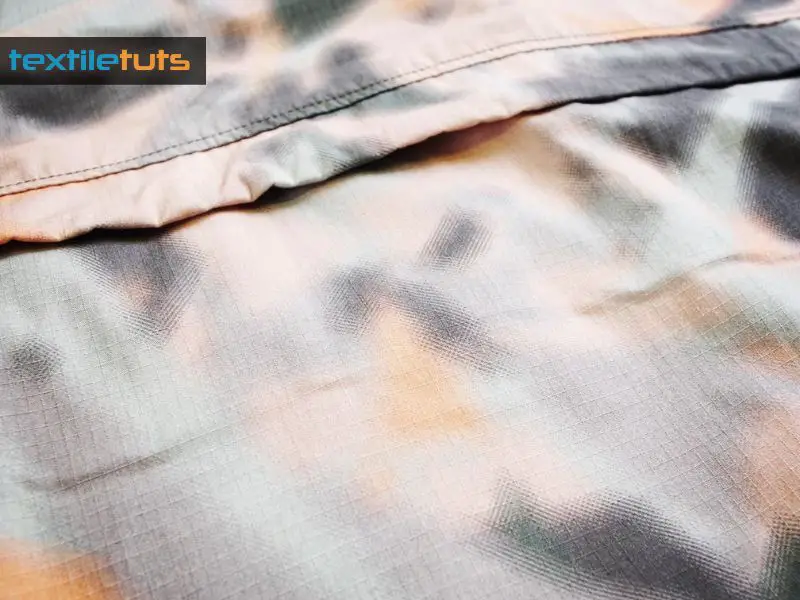
Impenetrable Durability
At the heart of Ripstop Nylon’s impressive resume is its exceptional durability. What sets this fabric apart is the unique interwoven pattern of reinforced threads at regular intervals in a crosshatch pattern.
These threads resist tears and prevent them from spreading, offering a fabric that holds itself against the rough and tumble of outdoor use. Whether it’s a hiker’s backpack or a set of sails, Ripstop Nylon is an impenetrable fortress.
Featherlight Charm
Despite its warrior-like strength, Ripstop Nylon is a featherweight champion. The fabric boasts an incredible strength-to-weight ratio, ensuring it doesn’t weigh you down during your most demanding adventures.
This lightweight nature also allows it to be compactly stored, making it an ideal choice for travel gear where every ounce counts.
Defying the Elements
Rain, wind, or sunshine, Ripstop Nylon stands its ground. The fabric is often coated or treated with water-resistant finishes, making it virtually immune to moisture and the perfect candidate for outdoor and wet-weather gear.
This ability to shrug off the elements means it dries rapidly, keeping you comfortable and moving forward.
Flexing Versatility
The beauty of Ripstop Nylon lies in its adaptability. It can be crafted into everything from hot air balloons that kiss the stratosphere to ultralight hammocks that sway in the hint of a breeze. Its application spans many industries, including sporting goods, camping equipment, flags, banners, and high-end fashion.
Enduring the Wear
Anyone looking for a long-term relationship with their gear must look no further. Ripstop Nylon’s abrasion-resistant properties ensure it doesn’t just quit on you over time. It has a long lifespan, resisting wear and tear like a badge of honor and offering consistent performance.
Low-Maintenance
For an all-star fabric, Ripstop Nylon is surprisingly low-maintenance. It’s machine washable and requires no special treatment to keep it looking and performing well. This ease of care makes it an even more attractive option for those who’d rather spend time exploring than doing laundry.
How to Minimize Ripstop Shrinkage
By handling ripstop nylon with care, you can largely prevent any shrinkage and maintain the material’s original size and strength. To minimize any potential for shrinkage, you must follow proper care instructions for ripstop nylon, which usually include:
Washing in cold or warm water
When cleaning your ripstop items, opt for cold or warm water instead of hot water. Hot water can accelerate the shrinking process by affecting the fabric’s fibres. By using colder temperatures, you help preserve the integrity of the ripstop material and reduce the likelihood of shrinkage.
Using a gentle detergent
Choose a mild and gentle detergent specifically formulated for delicate fabrics. Harsh chemicals and strong detergents can break down the fibres in the ripstop fabric, leading to shrinkage.
Look for detergents designed for cold-water washing to complement the first step and maintain the strength of the fabric.
Air drying
The most crucial step in preventing ripstop shrinkage is to air-dry your items. Avoid using a clothes dryer, as the heat and constant tumbling can cause the fabric to shrink.
Instead, lay your ripstop gear flat on a clean surface or hang it to air dry. This method not only minimizes shrinkage but also helps retain the fabric’s original shape and structure.
Avoiding direct heat
Along with skipping the dryer, be cautious about exposing your ripstop items to direct heat sources. Keep them away from radiators, heaters, or any high-temperature environments.
Excessive heat can lead to unwanted shrinkage and affect the overall performance of the fabric. If you must remove wrinkles, use a cool iron and place a cloth between the iron and the nylon fabric to avoid direct contact.
Care Instructions for Ripstop Fabric
Proper care of ripstop fabrics extends their lifespan and ensures they retain their protective qualities. Below are detailed care instructions to help you maintain your ripstop items.
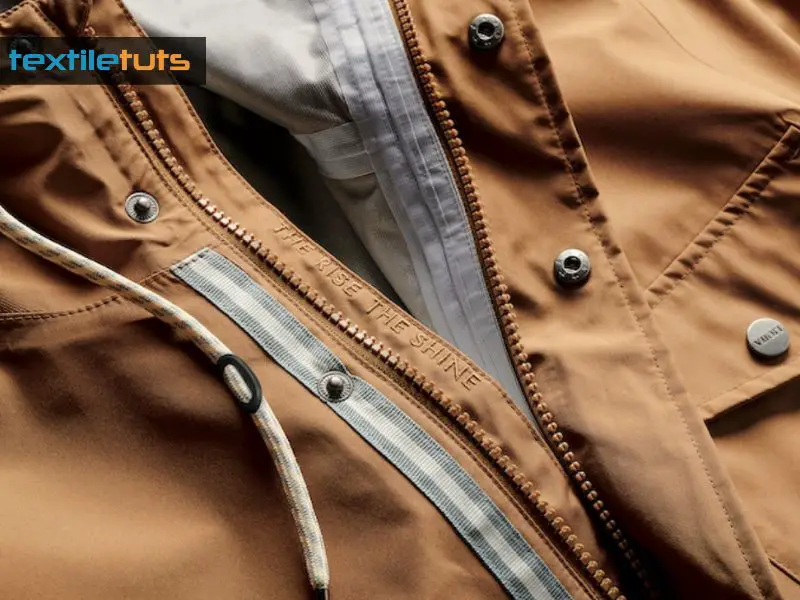
General Guidelines
- Read Manufacturer’s Label: Before you do anything, check the label provided by the manufacturer for specific care instructions. These guidelines should always take precedence over general advice.
- Avoid Harsh Chemicals: Strong detergents can damage the ripstop fabric and degrade its durability. Use mild detergents that are appropriate for delicate fabrics.
- Cold Water Washing: Use cold water for washing ripstop fabrics to prevent shrinkage and damage to the material.
- Gentle Cycle: If using a washing machine, select a gentle cycle with a low spin to avoid putting too much stress on the fibres.
Washing
- Pre-Treatment: For any stains, gently pre-treat them with a soft cloth and a small amount of gentle detergent. Avoid scrubbing as this can damage the fabric.
- Machine Washing: If the item is machine washable, turn it inside out to protect any coatings, and wash it separately or with similar colors to prevent color transference.
- Hand Washing: For more delicate ripstop fabrics, hand washing is recommended. Submerge the item in cold water mixed with a small amount of mild detergent and gently agitate.
Drying
- Air Drying: Lay the ripstop fabric flat or hang it to dry. Avoid drying it in direct sunlight as UV rays can degrade the material over time.
- Avoid Heat: Do not use a tumble dryer unless the care label says it’s safe. High temperatures can melt or shrink the fabric.
Ironing
- Low Heat Setting: If ironing is necessary, use the lowest heat setting and preferably iron the fabric inside or with a protective cloth between the iron and the ripstop material to avoid melting.
Storage
- Keep Dry: Ensure ripstop items are completely dry before storing them to prevent mold or mildew.
- Avoid Folding: Roll items like tents or tarps instead of folding to prevent creasing, which can weaken the fabric over time.
- Cool, Dark Place: Store ripstop fabric in a cool, dark place away from direct sunlight to prevent fading.
Repairs
- Patch Kits: Use a ripstop repair patch or tape specifically designed for the material for minor rips and tears.
- Professional Repair: If the damage is extensive, it might be worth seeking professional repair services to maintain the integrity of the fabric.
Special Considerations
- Waterproofing: The waterproof coating on ripstop fabric may wear off over time. Reapply waterproofing treatments as necessary, following the product instructions.
- Avoid Abrasion: Even though the ripstop is sturdy, it can still be worn down by constant friction against rough surfaces. Be mindful of how you use and pack ripstop items.
Can Ripstop and Shein Clothes Shrink the Same Way?
When it comes to fabric shrinkage, the shein clothes shrink mystery unraveled. While ripstop and Shein clothes are both prone to some degree of shrinkage, the way they shrink can differ. Ripstop fabric is more resistant to shrinking due to its woven pattern, while Shein clothes may shrink more easily.
Final Words
Ripstop fabric is designed to resist tearing and ripping, it is not invincible. While it is possible for ripstop fabric to shrink, it is not a common occurrence and can be avoided with proper care.
As with any type of fabric, following the manufacturer’s care instructions and using gentle washing and drying methods can help prevent shrinkage.
This durable and versatile fabric can withstand wear and tear, making it a great choice for various projects. So don’t let the fear of shrinkage stop you from using this fantastic fabric in your next project.

